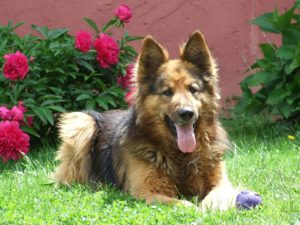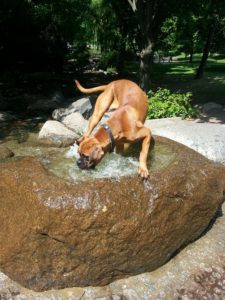 Pets are a big part of a lot of people’s lives, so naturally, it’s important to many homeowners to make their backyard as safe and comfortable as possible for their pets. Yards are more than just a place for a dog to do its business: A backyard offers pets space to run, play, and enjoy the outdoors. For pets that spend extended periods of time outdoors, having basic needs like shelter and fresh water are also important. Create a pet-friendly backyard that will keep your four-legged friend happy and secure while providing you with peace of mind.
Pets are a big part of a lot of people’s lives, so naturally, it’s important to many homeowners to make their backyard as safe and comfortable as possible for their pets. Yards are more than just a place for a dog to do its business: A backyard offers pets space to run, play, and enjoy the outdoors. For pets that spend extended periods of time outdoors, having basic needs like shelter and fresh water are also important. Create a pet-friendly backyard that will keep your four-legged friend happy and secure while providing you with peace of mind.
Choose Pet-Friendly Lawn Chemicals
Lawn chemicals and your pets do not mix. Fertilizers and pesticides often used on backyard lawns and gardens can affect the health of your furry friends when ingested, absorbed through the mouth or skin, or inhaled. Unfortunately, this is more common than you think. In a July 2013 study that looked at urine samples of dogs from 25 households, chemicals were detected in 19 of the 25 following a pesticide application. To reduce this risk, choose organic fertilizers and pesticides.
Build Secure Fencing
Fencing is designed to keep your pet in and other people and pets out and to provide privacy from neighbors and passers-by. With a secure fence, you can allow your pet to go leash-free without concern that it’ll somehow escape under, over, or through the fencing. There are many different types of fences to choose from, including solid wood, vinyl, plastic, aluminum, iron, or chain-link. In the end, your choice will come down to your privacy needs, finances, and aesthetics.
Avoid Planting Toxic Flowers and Plants
Whether you’re starting a garden or already have established plants in your backyard, do your homework and check whether the flowers and plants are potentially toxic to your pets. Many common backyard plants are toxic to pets, causing symptoms such as vomiting, diarrhea, seizures, lethargy, and loss of appetite. Even if your pet doesn’t usually eat the plants in your yard, err on the side of caution and avoid poisonous plants.
Create an Outdoor Potty Area
Allowing your pet to relieve itself on the lawn can quickly lead to brown grass or bare spots. If you have the extra room, create a small outdoor potty area that you can teach your pet to use ins tead of the lawn. Create a frame made of wood and fill it with gravel, mulch, or pebbles. Whichever ground covering you choose should provide adequate drainage. If you have trouble with odors, try a pet-friendly odor eliminator spray designed to neutralize pet smells in outdoor areas.
tead of the lawn. Create a frame made of wood and fill it with gravel, mulch, or pebbles. Whichever ground covering you choose should provide adequate drainage. If you have trouble with odors, try a pet-friendly odor eliminator spray designed to neutralize pet smells in outdoor areas.
Add a Water Feature to Keep Your Pet Cool
Fresh water is a must for pets that spend time outdoors, especially in the hot summer months. Add a water feature to your landscape design to ensure that your pet remains cool and well-hydrated. A small splash fountain, stream, or pond is ideal. When building a water feature, take safety into account: Avoid large bodies of water that your pet could fall into and not be able to escape. The right water feature will not only delight your pet but also be a feature you can enjoy.
